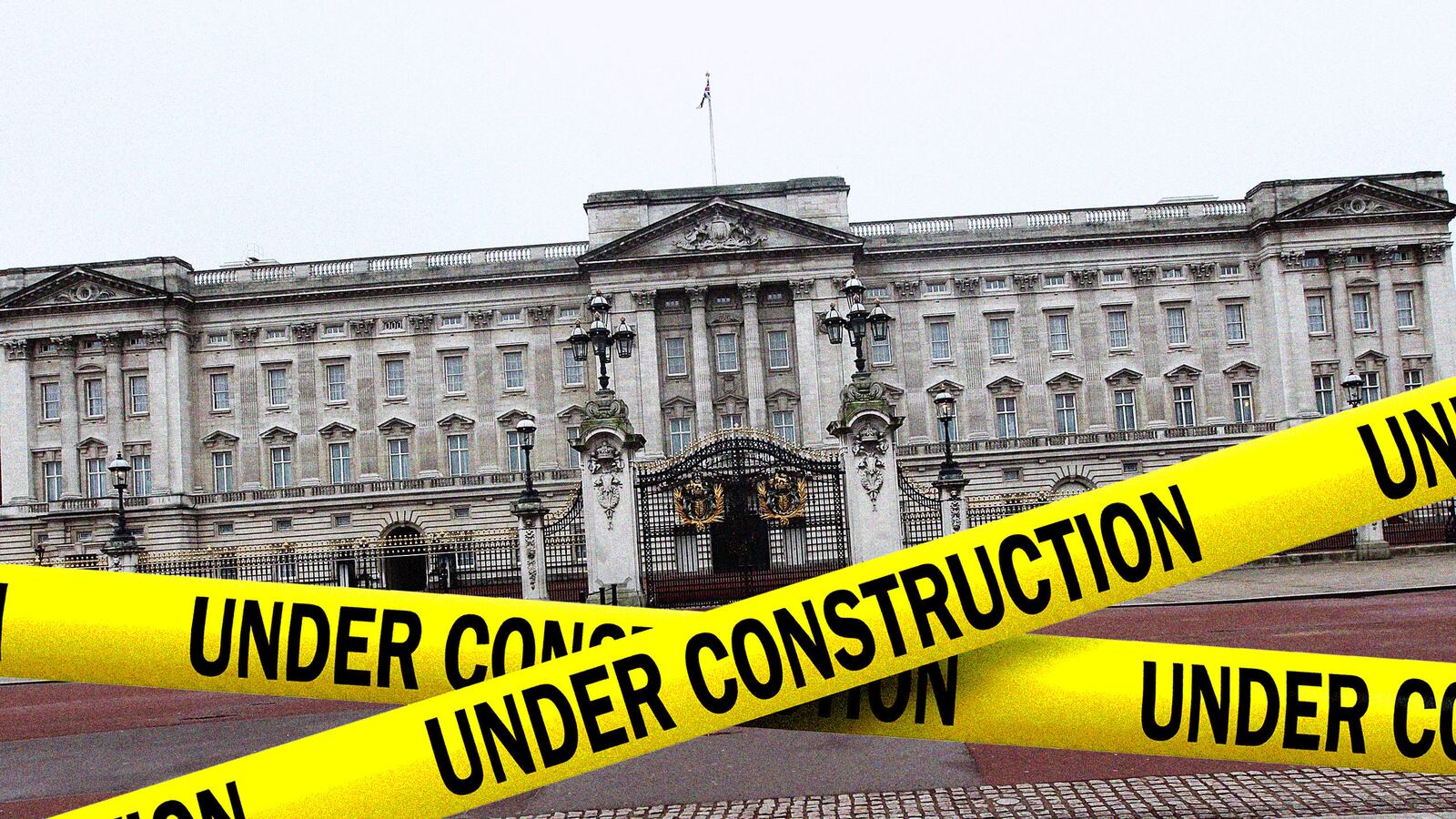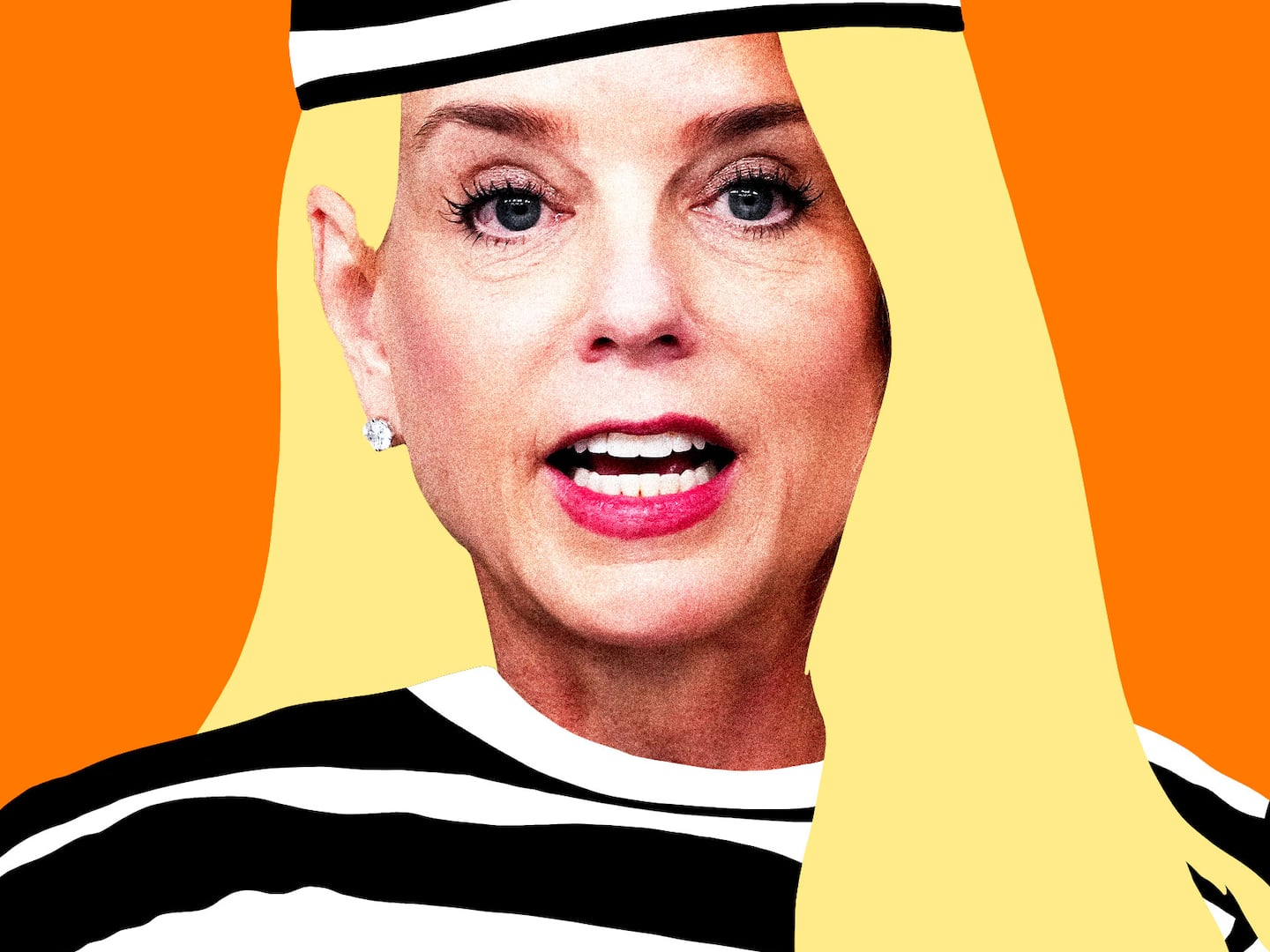The disrepair at Buckingham House is legendary.
Princess Anne narrowly avoided being killed by a lump of falling masonry a few years ago, buckets are routinely placed under leaking roofs during rainstorms and loose chunks of parquet floor are constantly being stuck down by the maintenance staff.
But, still, a flurry of reports today that the country is likely going to spend in the region of $485m restoring the palace—the Queen’s official London residence—has been greeted with anger and disbelief in many quarters, as the country nervously confronts the inevitable costs of Brexit.
The problem of what to do with the palace has been on the agenda for many years. The Queen never felt particularly inclined to dip into her personal fortune to pay for restoring the palace, arguing, with some justification, that she shouldn’t be required to personally fund what is essentially a municipal building project.
The palace, her courtiers have long argued, isn’t ‘hers’ the way other royal houses such as Sandringham, Balmoral and even Windsor Castle are. ‘Buck House’ is used for all manner of official business, from investitures to fundraisers to garden parties and is actually open to the public for three months of the year.
Plus, she doesn’t even like it. The Netflix series The Crown captured the family’s loathing of the Palace perfectly. The Queen would have much rather lived in Clarence House, but was more or less forced by Churchill to move into the palace. The Queen lives in a nine-room apartment within the Palace, which has 775 rooms.
It’s not hard to see why she should hate the palace so much. It may be the backdrop to a thousand picture postcards but the palace is also a ghastly example of the very worst kind of lumpen British architecture.
Originally built as a splendid townhouse for the Duke of Buckingham, it was acquired by George III for £21,000 in 1761. George promptly added several new blocks to create the inner courtyard, but the first tragedy to befall Buck House came in the 1820s and 30s when George IV determined to create an impressive palace in the center of London for its own sake.
A perfectly good British stately home was ruined, and the building and gilding ran so prodigiously over budget that on his death, one of his successor William IV’s first acts was to fire his father’s architect, John Nash.
The second great tragedy was the construction of the vast public face of Buckingham Palace, the side that faces the Mall and from whose balcony the merry band wave at their subjects on joyous occasions, which was only built in 1847 to the plans (largely) of Prince Albert, Queen Victoria’s husband.
The result is that Buckingham Palace basically resembles a grotesquely oversized Victorian town hall plonked down in the middle of London. One can quite understand why the Queen does not want to spend her own money on it. Prince Charles relishes the prospect of moving in just as little as his mother did. He has actually, in one of his more lucid moments, proposed turning it into a hotel, the traditional fate of unwanted and/or crumbling historic British mansions.
Today the government folded in this long game of poker and leaked the news that it would effectively pay for the work to the palace through an increase to the Sovereign Grant, currently some £46m annually.
The Queen currently receives the equivalent of 15 per cent of the profits of the Crown Estate—the monarch’s property portfolio which is now in the hands of the Treasury—but that will go up to 25 per cent for the duration of the work, which should yield the Monarch in the order of £370m total.
The work will include replacing 100 miles of electrical cabling, some of which is up to 60 years old, 30 miles of water pipes, 6,500 electrical sockets, 5,000 light fittings, 2,500 radiators and 500 pieces of sanitary ware, according to a report in The Telegraph.
£400m over ten years is not, in truth, a huge amount of money to sort out the palace, which clearly cannot be allowed to fall down or be vacated. The cost of restoring the houses of Parliament is estimated to be nearly ten times as much, but, that is small consolation to those affected by public sector cuts and pay freezes as a result of the Government’s ongoing austerity drive.
British republicans are seething. Graham Smith, leader of the anti-monarchy group Republic, says the refurbishment works needed on Buckingham Palace was an “indictment of the Queen’s mismanagement of royal finances.”






